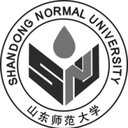Susceptibility to the acute toxicity of acrylonitrile in streptozotocin-induced diabetic rats: protective effect of phenethyl isothiocyanate, a phytochemical CYP2E1 inhibitor.
Märksõnad
Abstraktne
Diabetes mellitus is a significant global public health issue. The diabetic state not only precipitates chronic disease but also has the potential to change the toxicity of drugs and chemicals. Acrylonitrile (AN) is a potent neurotoxin widely used in industrial products. This study used a streptozotocin (STZ)-induced diabetic rat model to examine the role of cytochrome P450 2E1 (CYP2E1) in acute AN toxicity. The protective effect of phenethyl isothiocyanate (PEITC), a phytochemical inhibitor of CYP2E1, was also investigated. A higher incidence of convulsions and loss of the righting reflex, and decreased rates of survival, as well as elevated CYP2E1 activity, were observed in diabetic rats treated with AN when compared to those in non-diabetic rats, suggesting that diabetes confers susceptibility to the acute toxicity of AN. Pretreatment with PEITC (20-80 mg/kg) followed by AN injection alleviated the acute toxicity of AN in diabetic rats as evidenced by the decreased incidence of convulsions and loss of righting reflex, and increased rates of survival. PEITC pretreatment at 40 and 80 mg/kg decreased hepatic CYP2E1 activity in AN-exposed diabetic rats. PEITC pretreatment (20 mg/kg) increased the glutathione (GSH) content and glutathione S-transferase (GST) activity and further decreased ROS levels in AN-exposed diabetic rats. Collectively, STZ-induced diabetic rats were more sensitive to AN-induced acute toxicity mainly due to CYP2E1 induction, and PEITC pretreatment significantly alleviated the acute toxicity of AN in STZ-induced diabetic rats. PEITC might be considered as a potential effective chemo-preventive agent against AN-induced acute toxicity in individuals with an underlying diabetic condition.



